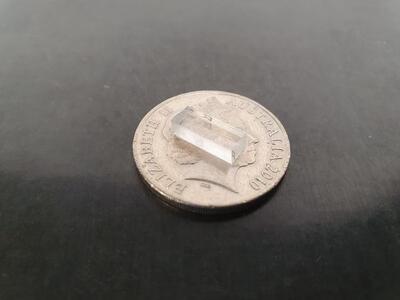Standard optical fibre created with 19 cores

A team of Japanese, Australian, Dutch and Italian researchers have achieved 1.7 Petabits of speed over a 67 kilometre length of optical fibre. The fibre, which contains 19 cores that can each carry a signal, meets the global standards for fibre size, ensuring that it can be adopted without massive infrastructure change. It also uses less digital processing, thereby reducing the power required per bit transmitted. Macquarie University researchers supported the invention by developing a 3D laser-printed glass chip that allows low loss access to the 19 streams of light carried by the fibre and ensures compatibility with existing transmission equipment.
The fibre was developed by the Japanese National Institute of Information and Communications Technology (NICT) and Sumitomo Electric Industries. The work was performed in collaboration with the Eindhoven University of Technology, University of L’Aquila and Macquarie University.
The world’s internet traffic is carried through optical fibres which are each 125 microns thick (comparable to the thickness of a human hair). These industry standard fibres link continents, data centres, mobile phone towers, satellite ground stations, and homes and businesses. In 1988, the first subsea fibre-optic cable across the Atlantic had a capacity of 20 Megabits or 40,000 telephone calls, in two pairs of fibres. Known as TAT 8, it supported the development of the World Wide Web, but was soon at capacity. The latest generation of subsea cables such as the Grace Hopper cable, which went into service in 2022, carry 22 Terabits in each of 16 fibre pairs. That’s a million times more capacity than TAT 8, but is still not enough to meet the demand for streaming TV, video conferencing and all other global communication.
Dr Simon Gross from Macquarie University said that decades of optics research has allowed the industry to push more and more data through single fibres, using different colours, different polarisations, light coherence and other tricks to manipulate light. Most current fibres have a single core that carries multiple light signals, but this current technology is limited to only a few Terabits per second due to interference between the signals.
“We could increase capacity by using thicker fibres. But thicker fibres would be less flexible, more fragile, less suitable for long-haul cables, and would require massive re-engineering of optical fibre infrastructure. We could just add more fibres. But each fibre adds equipment overhead and cost and we’d need a lot more fibres,” Gross said.
To meet the growing demand for movement data, telecommunication companies need technologies that offer greater data flow for reduced cost. The new fibre contains 19 cores that can each carry a signal.
“Here at Macquarie University, we’ve created a compact glass chip with a wave guide pattern etched into it by a 3D laser printing technology. It allows feeding of signals into the 19 individual cores of the fibre simultaneously with uniform low losses. Other approaches are lossy and limited in the number of cores. It’s been exciting to work with the Japanese leaders in optical fibre technology. I hope we’ll see this technology in subsea cables within five to 10 years,” Gross said.
Another researcher involved in the experiment, Professor Michael Withford from Macquarie University, said this development in optical fibre technology could have far-reaching implications. “The optical chip builds on decades of research into optics at Macquarie University. The underlying patented technology has many applications including finding planets orbiting distant stars, disease detection, and even identifying damage in sewage pipes,” Withford said.
The results of this experiment were published in the 46th Optical Fiber Communication Conference.
Liquid metal circuits developed for stretchable electronics
Researchers have developed a novel liquid-metal material that is suitable for making flexible and...
Understanding confinement loss in hollow-core fibres
Researchers have gained a better understanding of what makes some hollow-core optical fibres more...
Transferring data with many colours of light
Researchers have developed a new photonic transmitter chip mounted on a circuit board with...





